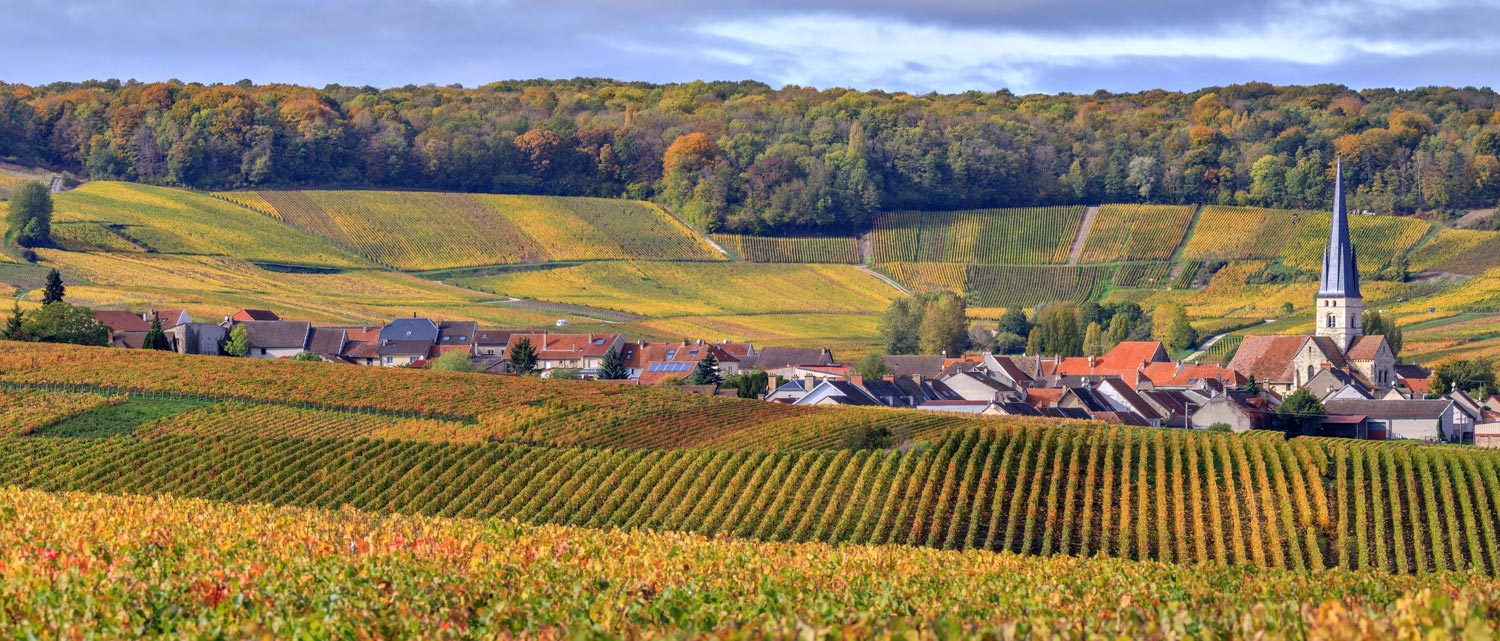
To think of weddings, birthdays, victories and parties without Champagne is like a bird without wings. When we look for lift, for a quick change in mood, nothing delivers better than the pop of a Champagne cork.
The Champagne region is found in the north-east of France, on an historical crossroads of Western Europe, and has changed hands multiple times over the centuries. The evidence of these external influences is there wherever you look. While it is eminently possible that the Gauls may already have been tending vines before the Romans arrived, there is general consensus that vineyards for wine production were established here in the 1st century AD. Of course, the produce of those vineyards would not have been sparkling wine- that story comes much later. But all around one can see the contributions of neighbours. The chalk-pits of Reims, now used as cellars, remind us of the Romans. Names such as Krug, Bollinger, Heidsieck- all Germans- are regarded among the very best houses and there are many smaller ones too, including several with Belgian or Dutch heritage. There is also a major British claim in that the invention of the bubbles was only possible due to the arrival of la verre anglaise that came from coke-fired glass production in the second half of the 17th century, exactly around the time that Dom Pérignon was cellarmaster at Hautvillers.
Champagne has been favoured by royalty, the rich and the famous throughout history and there are many wonderful, colourful stories, all adding to the legend. Was the coupe champenoise actually modelled on Marie-Antoinette’s breast? Certainly Champagne was in high demand in 19th century Tsarist Russia, with Louis Roederer famously creating Cristal for Alexander II; we know that Churchill’s rallying cry to British Forces was “Remember gentlemen it is not just France we are fighting for but Champagne!”. America too has played an enormous part, not least in the liberation of the region but also in the boom in sales in the 20th Century and of course the imagery and glamour that the product achieved through Hollywood.
Champagne is a truly global wine and its big players are some of the best known names on the planet. The Champenois have fought fiercely and cleverly to protect their product from imitation while continuing to expand their region to suit their needs. The delimited area today extends to some 34,000 ha and annual production has reached 300m bottles. With the wine requiring extended time in bottle before disgorgement and release for sale, it is estimated that the cellars beneath the hills (and the less romantic facilities built upon them) contain stocks of over 1bn bottles.
Such numbers require major players and any visitor to the region in the post-war years up to the end of the 20th century couldn’t fail to notice the dominance of the big names. Small growers were content to sell their grapes to the large houses or the local cooperatives, with premiums paid according to the échelle des crus. However, there has been change in the last generation, with the rise of the smaller growers who are now willing to compete with the big boys by making their own wines, rather than selling their fruit. They are breathing new life and vigour into an environment that had become rather too corporate.
As a result, there is a much healthier balance in the region today, not just in commerce but also in the vineyards themselves. In the post-war years, chemicals dominated and the Parisian poubelles were emptied onto the vineyards to provide cheap fertiliser. You can still find blue plastic there even today. Today’s artisan growers, however, are increasingly likely to be farming sustainably, with organic and biodynamic regimes on the rise and the bigger houses have also begun to shift in this direction. Healthy vineyards produce healthy grapes- and healthy profits.
There is genuine energy and excitement in Champagne today. Multi-vintage and multi-vineyard blends sit happily alongside single vineyard, single varietal and single vintage expressions. Rosé, low dosage and late-disgorged wines have become more and more demanded. Formats range from diddy quarter bottles up to Nebuchadnezzars and beyond. All of this helps to ensure that there is a champagne for every occasion and that a little lift is never far away.